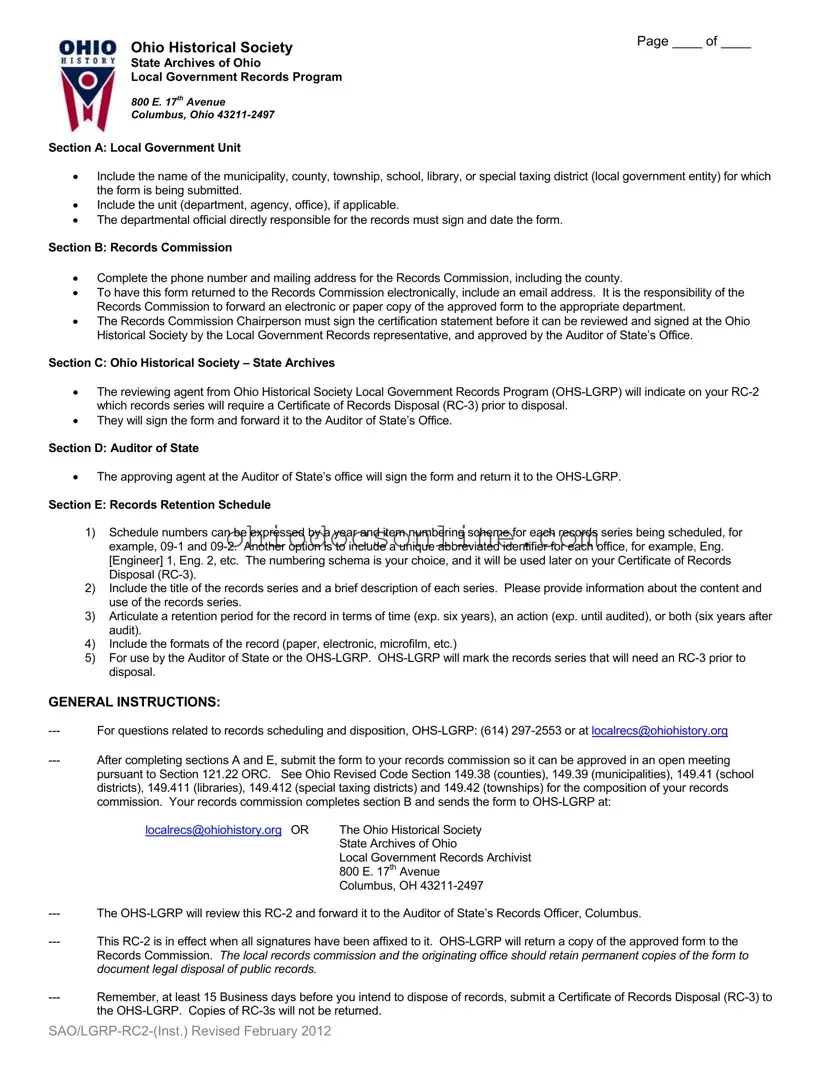Ohio Historical Society Template in PDF
The Ohio Historical Society form is a document used by local government entities to schedule and manage the retention and disposal of public records. This form ensures compliance with state regulations while facilitating the proper handling of records. It includes sections for local government information, records commission details, and approval from the Ohio Historical Society and Auditor of State.
Open Editor
